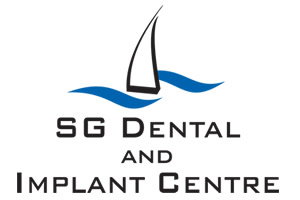How ‘Cosmetic Bonding’ Is Used In Dental Care
This popular technique can be used in a number of restorative and cosmetic treatments
If you are into middle age, you will no doubt have seen a lot of changes occurring over the years at our Burton dental practice. From basic restorative care when we first opened over 30 years ago, through to the sophisticated treatments that we now have available such as dental implants and dental braces that are almost invisible when worn.
While these advances have offered many patients of Mike Allen’s Dental Practice a way to have strong, great looking teeth, there are also some treatments that have been around for a long time and sometimes get forgotten amongst the ‘headline’ treatments that are now available. One of these long-standing treatments is bonding, sometimes also referred to as ‘cosmetic bonding’.
What is bonding?
Bonding is done using a composite resin that can be used in a number of procedures. These are usually relatively minor ones, often used for cosmetic, rather than restorative purposes. As its name suggests, this resin can be applied to the tooth by bonding, or sticking to it. In many cases, bonding will offer a quick and immediate solution to a problem, particularly as it often requires minimal preparation of the affected tooth.
What situations might it be used in?
Although fillings and dental crowns are more widely used where significant damage has occurred to a tooth, bonding can help where there are no significant structural implications and the restoration needed may be more cosmetic. A good example of this is where a tooth has been chipped but has not compromised the tooth structure. This can have the effect of spoiling the look of the tooth but can also leave a sharp edge on which you could cut your tongue. Bonding is excellent in this situation and can be shaped and smoothed to provide a natural looking, and smooth edged tooth.
In some cases it can be used to close a gap between the top front teeth, also known as a diastema. Although, in many cases, this may require a more extensive treatment such as porcelain dental veneers or orthodontic treatment, bonding is an option that we would certainly explore due to the minimally invasive nature of the procedure.
Bonding composites can also be used for fillings and may also be used to protect the lower part of the tooth if the patient’s gums have receded, revealing the root part of the tooth that is unprotected by enamel.
Pros and cons
The most notable advantages of bonding is that it can usually be applied without the need for invasive treatment. It also bonds well with the natural tooth meaning there is less need for preparation. It’s speed of application and straightforwardness of procedure also means that it is typically quite cost-effective.
It is not without its drawbacks however. The materials used in dental bonding are slightly porous and this does mean that it is more prone to staining than say porcelain, which is much more resistant. This means that where bonding has been applied to the tooth for some time, it will attract the staining effects of common foods and drinks such as tea and coffee. For this reason, although it is possible to have veneers made from similar material, most patients opt for the more stain resistant porcelain veneers. That said, if a patient is unsure about having veneers, this can offer a way to show them how their teeth would look with more permanent veneers and can offer a non invasive ‘trial run’.
Bonding also does not offer the strength of some other treatments and may need to be replaced more often. How often this is may depend on the location of the tooth and the nature of the damage. It will also depend on how much the tooth is used. The positives of this are that if it does break, it can be replaced with relative ease. If this becomes too inconvenient though, patients of Mike Allen’s Dental Practice have a range of more permanent alternatives available, including crowns and porcelain veneers.
Patients should note that when bonding is applied, you should avoid eating or drinking anything that might stain your teeth for around 48 hours. Bonding is more vulnerable to staining, and to keep the material as natural looking as possible, care should be taken during this initial period.
For advice or information about treatments that we have available at our Burton family dental practice, please arrange to see one of our friendly local team. Our receptionists are here and waiting for your call and they can be reached on 01283 845345.
